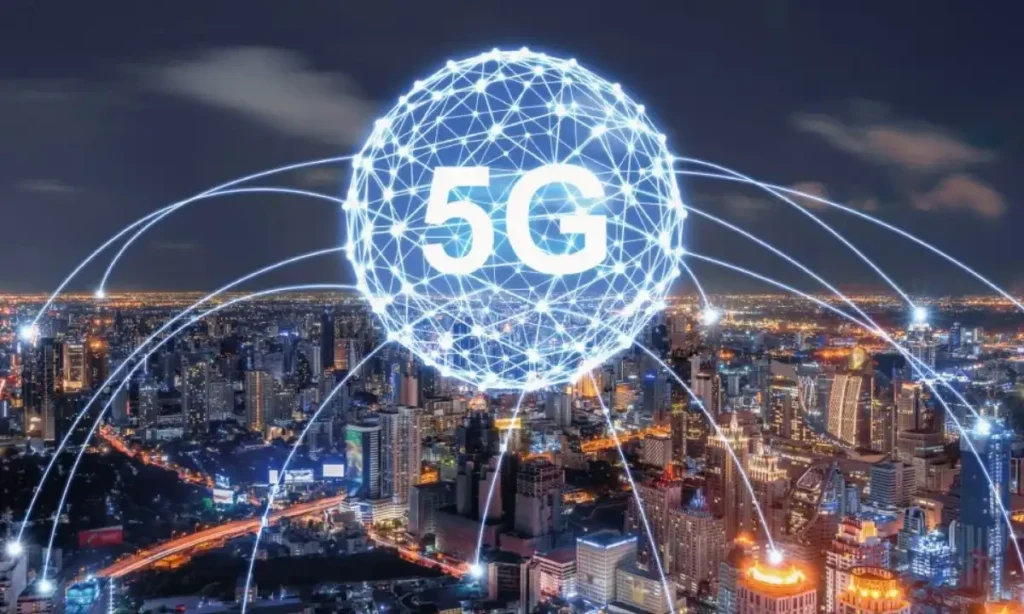Transforming Industries and Everyday Life
With the potential to connect a large number of devices simultaneously, lower latency, and quicker speeds than previous generations, 5G technology promises to be a major advancement over its predecessors. It is critical for organizations and individuals alike to comprehend the implications and possible uses of 5G networks as they continue to roll out internationally.
What is 5G?
The goal of fifth-generation wireless technology, or 5G, is to outperform 4G in terms of mobile network performance. It uses higher frequency bands to function, which results in more faster data transfer speeds and better connectivity. Three primary functions of the technology are supported: mass machine-type communications (mMTC), ultra-reliable low-latency communication (URLLC), and improved mobile broadband (eMBB).
speed and latency
The Power of 5G is definitely its speed. 5G networks enable data transfer rates that are tenfold faster than 4G, with theoretical speeds as high as 10 Gbps. Faster downloads, more responsive apps, and flawless high-definition video streaming are all made possible by this improved speed.
With 5G, latency—the time it takes to send and receive data—is significantly decreased. 5G networks seek to cut latency to as little as 1 millisecond, compared to 4G networks’ 30–50 millisecond delay. For applications like online gaming and remote surgery that require real-time interactions, this reduction is essential.
Use Cases and Applications
Many uses are made possible by 5G’s fast speed and low latency:
Smart Cities: 5G makes it possible to connect a large number of IoT devices, which in turn makes it possible to construct smart cities. Through automated technologies and real-time data processing, this connectivity enhances public safety, waste collection, and traffic control.
Autonomous Vehicles: In order to operate safely, self-driving cars must quickly communicate with their surroundings. Because 5G has a low latency, cars can process and react to data faster, which improves the dependability and security of autonomous driving systems.
Virtual and augmented reality: 5G’s high bandwidth and low latency enable AR and VR technologies to create more engaging and dynamic experiences. 5G improves the responsiveness and quality of applications used for virtual meetings, training simulations, and gaming.
Healthcare: By providing high-quality video consultations and remote patient monitoring, 5G supports telemedicine in the healthcare industry. It also makes it easier to use cutting-edge medical equipment, which needs real-time data transfer to provide precise diagnosis and treatments.
Challenges and Factors to Consider
Although 5G has many advantages, there are some things to think about.
Infrastructure: In order to implement 5G, a large amount of new infrastructure must be built, including more cell towers and tiny cells. In rural or underdeveloped areas, in particular, this rollout may be expensive and time-consuming.
Security: The threats associated with more connectedness are also higher. Sustaining safety and confidence in 5G networks requires strong security measures to shield data and stop breaches.
Health Concerns: The possible health implications of increased RF radiation exposure have drawn some attention. To solve these issues and guarantee public safety, further research and regulatory monitoring are required.

The Prospects of 5G
The 5G technology is still developing to its full potential. We should anticipate many more advancements and applications as networks grow and technology progresses. 5G is expected to have a significant impact on how connection develops in the future, improving daily experiences and changing entire sectors.
In summary
More than just a minor upgrade over 4G, 5G technology signifies a radical change in the way we communicate and engage with the digital world. Numerous new applications and innovations are being made possible by its improvements in speed, latency, and connectivity. It will be crucial to solve issues and realize 5G’s full potential for the good of society as technology develops further.
